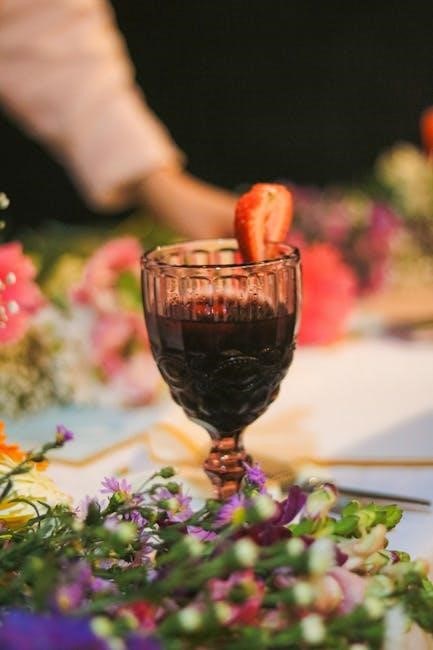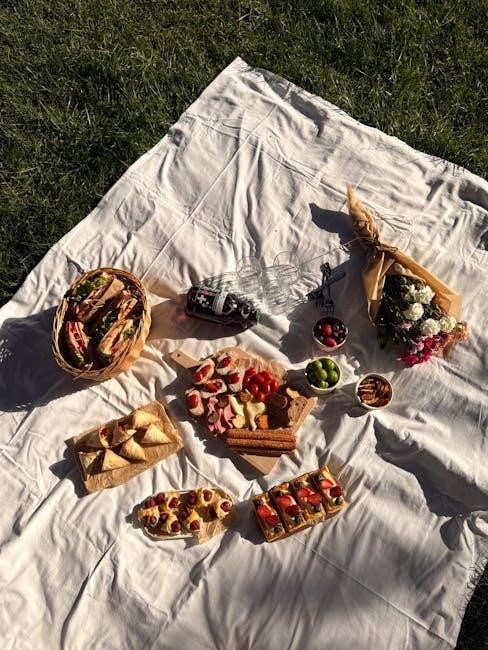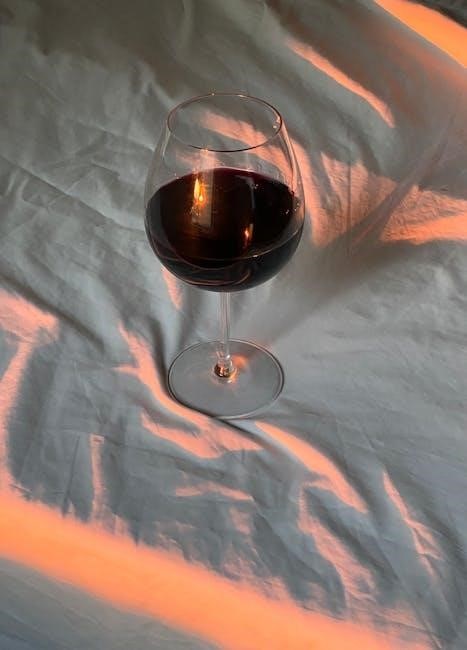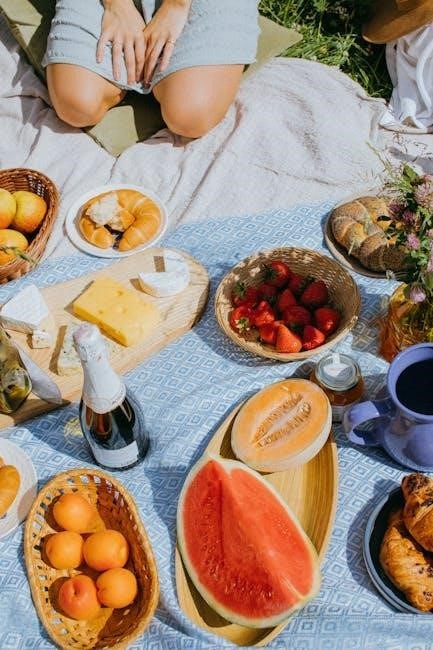
Welcome to the world of wine, where every sip tells a story. Wine is for everyone, regardless of expertise. Discover its origins, from vineyard to glass, and master the basics of tasting, serving, and savoring this timeless drink. Whether you’re a curious novice or an aspiring connoisseur, this journey into wine is sure to delight and inspire.
What is Wine?
Wine is an alcoholic beverage made primarily from fermented grapes of the species Vitis Vinifera. While it can also be created from other fruits, grapes dominate commercial production. The fermentation process transforms grape compounds—water, sugar, acids, and polyphenols—into a drink characterized by four basic traits: sweetness, acidity, tannins, and body. This versatile beverage offers endless variety, from crisp whites to bold reds, each with unique flavors shaped by terroir, climate, and winemaking techniques.
Basic Wine Traits
Understanding wine begins with its four core traits: sweetness, acidity, tannins, and body. Sweetness refers to residual sugar, ranging from dry to sweet. Acidity adds brightness and balance, making wines feel crisp. Tannins, from grape skins and seeds, create a drying sensation, often described as astringent. Body describes the wine’s weight, from light and delicate to full-bodied and rich. These traits together define a wine’s character, helping you identify and enjoy its unique profile.
Key Grape Varieties
Exploring wine starts with understanding its primary grape varieties. Popular red grapes include Cabernet Sauvignon, known for bold tannins, Merlot for smoothness, and Pinot Noir for delicacy. On the white side, Chardonnay offers richness, Sauvignon Blanc delivers crisp acidity, and Riesling ranges from sweet to dry. These varieties form the backbone of many wines, each showcasing unique flavor profiles shaped by their terroir and winemaking techniques. Learning these grapes is the first step to navigating the vast world of wine with confidence.
Types of Wine
Wine comes in four main types: red, white, sparkling, and dessert. Each offers unique flavors and textures, shaped by grape varieties, production methods, and traditions.
Red Wine
Red wine is crafted from dark-skinned grapes, with skins left on during fermentation, giving it rich color and bold flavors. Popular varieties include Cabernet Sauvignon, Merlot, and Pinot Noir. These wines often feature notes of berries, spices, and earthy undertones. Tannins, naturally occurring compounds, create a drying sensation, adding complexity. Red wines pair beautifully with hearty dishes like red meat and robust cheeses. Serving at room temperature enhances their full-bodied character, making them a favorite for special occasions and cozy gatherings.
White Wine
White wine, made from green or yellowish grapes with skins removed, offers crisp, refreshing flavors. Varieties like Chardonnay, Riesling, and Sauvignon Blanc feature notes of citrus, green apple, and floral hints. Light-bodied and zesty, white wines are perfect for lighter meals, seafood, or summer days. Serve chilled to enhance their vibrant acidity and fruity aromas, making them a delightful choice for casual gatherings or as an elegant aperitif.
Sparkling Wine
Sparkling wine, with its effervescent charm, adds joy to any occasion. Produced through a second fermentation, it captures lively bubbles and vibrant acidity. Champagne, Prosecco, and Cava are popular types, often enjoyed at celebrations. Pair them with delicate dishes, seafood, or desserts like strawberries for a delightful match. Serve well-chilled—between 40-45°F—to preserve the fizz and enjoy the lively, festive experience these wines offer, perfect for toasting or simply savoring the moment.
Dessert Wine
Dessert wines are sweet, rich, and perfect for ending meals on a high note. These wines, often made from overripe grapes or special techniques like botrytis, have high sugar content. Popular varieties include Sauternes, Moscato, and Tawny Port. They pair beautifully with chocolates, cheeses, or fruity desserts. Serve them slightly chilled to balance sweetness and acidity, creating a harmonious finish to any dining experience. Ideal for special occasions, dessert wines offer a deliciously sweet conclusion to your culinary journey.
Understanding Wine Labels
Wine labels reveal essential details like producer, region, grape variety, and vintage, helping consumers make informed choices about flavor, quality, and pairing potential.
How to Read a Wine Label
Start by identifying the producer, region, and grape variety, as these provide insight into the wine’s origin and flavor profile. Check the vintage year for harvest quality and alcohol content for strength. Look for terms like “Reserve” or “Estate Bottled” for quality indicators. Descriptions or tasting notes offer flavor hints, while awards suggest recognition. Sustainability certifications like “Organic” or “Vegan” cater to specific preferences. Use QR codes or websites for additional details, focusing on what matters most to your palate.
Wine Terminology Explained
Mastering basic wine terms can enhance your appreciation. Tannins refer to the drying sensation, often found in red wines. Acidity adds brightness and balance. Body describes the wine’s weight—light, medium, or full-bodied. Fruit-forward wines emphasize fruit flavors, while oaky notes suggest aging in barrels. Finish is the lingering taste after sipping. Understanding these terms helps you describe and enjoy wine with confidence, making every sip more meaningful.

Wine Tasting 101
Wine tasting is a sensory journey. Start by observing the color and clarity. Swirl to release aromas, then sip, savoring the flavors and finish. Practice makes perfect!
The 4-Step Tasting Method
Mastering the art of wine tasting is straightforward with this simple method. Look: Observe the wine’s color, clarity, and viscosity. Smell: Swirl to release aromas and inhale deeply. Taste: Sip, letting the wine coat your palate to detect flavors and textures. Think: Reflect on the finish and overall balance. This approach helps you uncover the unique characteristics of any wine, making every tasting a learning experience. Consistent practice will sharpen your senses and deepen your appreciation of wine.
Identifying Flavors and Faults
Recognizing flavors and faults in wine enhances your tasting experience. Common flavors include fruity notes like berries or citrus, floral hints like roses, or earthy tones like mushrooms. Faults, however, can spoil the experience. Oxidation may make wine taste flat, while cork taint leaves a moldy smell. Learning to identify these elements helps you appreciate the wine’s quality and origin, making you a more informed enthusiast. Practice makes perfect in distinguishing between a wine’s unique characteristics and potential imperfections.
Serving Wine Essentials
Proper serving temperatures and glassware are key for enhancing flavor. Reds at room temperature, whites chilled. Sparkling wines in flutes. The right glass elevates the experience.
Proper Serving Temperatures
The ideal temperature enhances flavor and aroma. Serve red wines at 60-65°F (15-18°C) for bold, fruity notes. Whites at 45-50°F (7-10°C) for crispness. Sparkling wines chill to 40-45°F (4-7°C) for vibrancy. Rosés, like whites, shine at 45-50°F. Dessert wines, sweet and rich, are best at 45-55°F. Avoid over-chilling, as it numbs flavor. Precision isn’t critical, but staying close to these ranges ensures optimal enjoyment.
Choosing the Right Wine Glass
The right glass enhances your wine experience. Red wines use a larger bowl for oxidation, boosting bold flavors. Whites need a smaller bowl to preserve crispness. Sparkling wines are best in flutes to maintain effervescence. Dessert wines use smaller openings to concentrate sweetness. Crystal glass enhances aroma, while the rim shape directs wine to the right palate area. Match your wine to the perfect glass for a richer, more enjoyable tasting experience. The glass matters—so pick wisely!

Wine and Food Pairing
Pairing wine with food elevates any meal. Experiment with reds for red meats, whites for fish, and sparkling for celebrations. Find your perfect match to enhance flavors and enjoyment!
Basic Pairing Principles
Start with simplicity: match red wines to red meats and white wines to lighter dishes. Consider acidity, sweetness, and tannins. Pair bold reds like Cabernet with hearty meats, while crisp whites like Sauvignon complement fresh salads. Sparkling wines add a festive touch to any occasion. For desserts, opt for sweet wines like Moscato. Remember, personal taste matters most, so experiment and find your perfect pairings to elevate your dining experience effortlessly.
Popular Food and Wine Combinations
Red wine pairs perfectly with red meats like steak or lamb, while white wine complements fish, poultry, or salads. Cabernet Sauvignon shines with grilled meats, and Pinot Noir pairs well with earthy dishes. Chardonnay, with its buttery notes, is ideal for roasted chicken or seafood. Sparkling wines like Champagne are great for celebrations or appetizers. For dessert, sweet wines such as Moscato or Tawny Port pair beautifully with chocolate or fruit. These classic combinations offer a great starting point for any meal.
Wine Faults and Quality
Wine faults like cork taint or oxidation can ruin a bottle. Understanding these issues and quality markers helps you appreciate good wines and avoid bad ones.
Common Wine Faults
Wine faults can spoil your drinking experience. Cork taint, caused by a contaminated cork, gives off a musty smell. Oxidation occurs when wine is exposed to too much air, making it taste flat or nutty. Volatile acidity can make wine smell vinegary. These faults are easy to spot once you know what to look for. Recognizing them helps you enjoy your wine better and avoid serving faulty bottles to guests.
Understanding Wine Quality
Wine quality is about balance, complexity, and how well its elements—acidity, tannins, sweetness, and flavors—harmonize. A high-quality wine typically has clarity, vibrant color, and a bouquet that reflects its grape variety or region. Factors like terroir, winemaking techniques, and aging processes also influence quality. While personal taste plays a role, a well-crafted wine should feel refined and layered, offering a satisfying finish. Learning to identify these traits helps you appreciate the craftsmanship behind a great bottle.

Resources for Learning
Discover Wine Folly, a beginner-friendly guide offering infographics, tasting tips, and courses. Subscribe to their newsletter for advanced challenges and deepen your wine knowledge effortlessly.
Recommended Wine Books
For a deeper dive, explore The Essential Guide to Wine by Wine Folly, offering clear visuals and practical tips. The Wine Bible by Karen MacNeil is another excellent resource, providing comprehensive insights for all levels. For advanced learners, The Oxford Companion to Wine by Jancis Robinson delivers detailed expertise. These books cover wine basics, tasting techniques, and regional insights, making them indispensable for any wine enthusiast’s journey.
Online Tools for Wine Education
Enhance your wine knowledge with online tools like Wine Folly, offering interactive guides and quizzes. Their newsletter provides expert tips and tasting exercises. Websites like Wine Spectator and Decanter feature articles, videos, and courses. Use apps like Vivino to explore wines, track tastings, and connect with a community. These resources make learning about wine engaging and accessible, helping you master the basics and beyond from the comfort of your home.

Final Thoughts
Embrace the journey of wine discovery with curiosity and joy. Every sip is a chance to explore new flavors and connect with the world’s rich wine heritage.
Encouragement for Further Exploration
Now that you’ve dipped into the world of wine, keep exploring with curiosity and enthusiasm. Wine is a lifelong journey, and every bottle offers new discoveries. Don’t be afraid to try unfamiliar varieties or pairing ideas—each sip is a chance to broaden your palate. Join wine communities, visit vineyards, and keep learning. Remember, wine is meant to be enjoyed, shared, and celebrated. Cheers to your continued adventure into the fascinating world of wine!